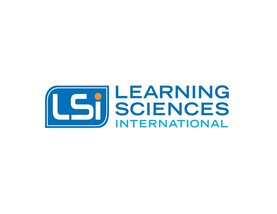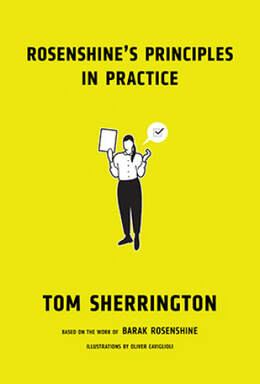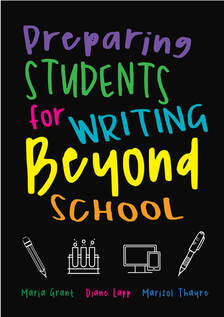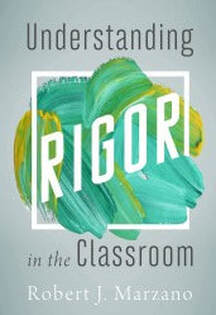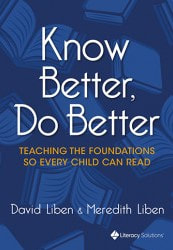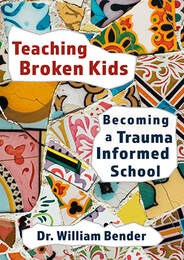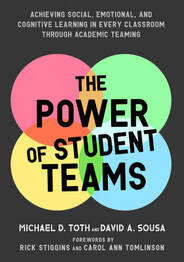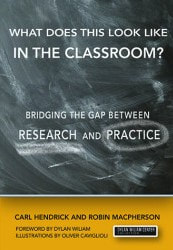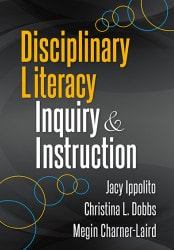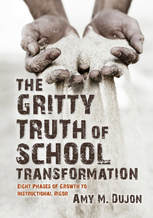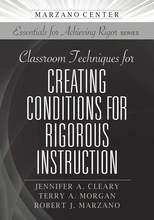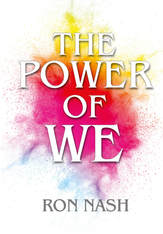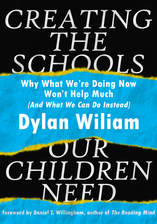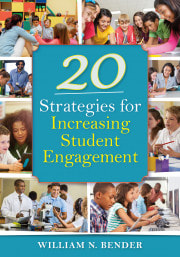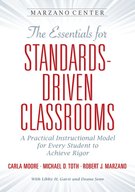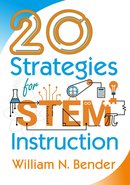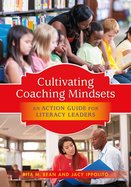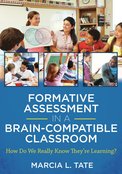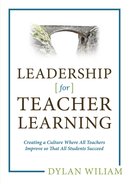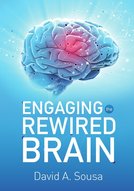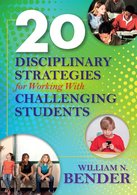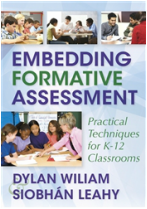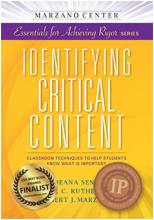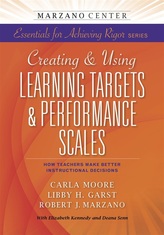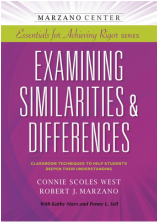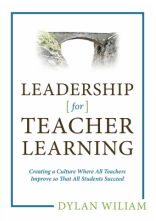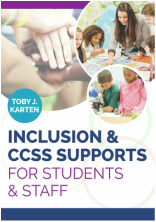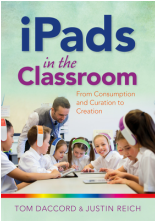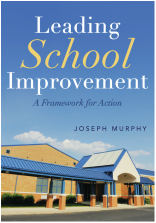New Releases
|
In 2012, Barak Rosenshine wrote an article for the International Academy of Education that set out a series of 10 simple, research-based principles of instruction that make for more effective teaching. Tom Sherrington read that article, and he’s been talking about it ever since. And his new book on implementing Rosenshine's principles is shaping up to be the summer's runaway hit in education.
As a principal, coach, and educational consultant in schools across the UK, Sherrington has used his considerable experience and expertise to elaborate and build on Rosenshine's Principles of Instruction for use in the classroom. There are no gimmicks, no fads, nothing outlandish; he puts forth a set of ideas rooted authentically in classroom experience, with classroom examples, actionable strategies, and tested methods of implementation developed from real classrooms. |
|
There is an endless list of authentic tasks that students will need to engage with every day of their professional lives—from making a phone call to fellow experts and presenting to nonexperts, to reading technical instructions or reports and writing proposals or emailing inquiries. The ability to communicate many ideas to a variety of audiences with an ever-increasing range of tools is critical to any path students end up following, but the way schools engage with literacy skills leaves an enormous gap between what students are confident in, and what real life will expect from them. Lapp, Grant, and Thayre want to eliminate this learning curve by expanding the narrow range of communication skills we empower students to become experts in. Using what you know about teaching language selection, tone, voice, audience, organization, and style, this guide will help you to broaden your students exposure and deepen their insights through: aample lessons, rubrics and notes, tools and activities, professional models, and dry-erase reusable outlines.
|
Robert J. Marzano has spent over 50 years revolutionizing educational research and observation. Here, he brings that experience and expertise to one of the most complicated questions in education: What is rigor, and how can I use it to improve my student’s learning? Marzano provides a focused, yet comprehensive framework for enhancing rigor across grade levels and subject areas, making it possible for entire schools and school systems to create comprehensive and rigorous K–12 curriculums.
|
|
Meredith and David Liben have been on the front lines of the reading wars since 1994, when their Harlem school's first cohort of students failed the NYC end-of-year reading exam. To fix the failing reading scores, they set out on a journey to find literacy practices and instructional materials that truly improve student learning outcomes. Their insights and ideas their school's reading scores to the highest of any non-gifted school in Harlem. This book captures what they learned and delivers real strategies for teachers to improve their students' reading levels.
|
Brokenness—whether from violence, neglect, substance abuse, or countless other ways students can find themselves isolated and hurting—transcends race, age, religion, ethnicity, and zip code, and can be found in any classroom. Based on stories of growth and transformation from his experience working with these children of trauma, Dr. Bender shows any educator how to reach and teach these children who so desperately need inspiration and healing in their schools and in their lives.
|
In this engageing new book, seasoned educators Toth and Sousa present an innovative pedagogical model called student-led academic teaming. In academic teams, students collaborate, peer coach, and peer teach while engaging in rigorous, standards-based tasks—blending the best we know about social and emotional learning (SEL) with cognitive learning (SECL) and delivering fresh solutions for the classroom. This groundbreaking take on learning includes a 10,000-student research study of a large urban district where teaming raised achievement across the board, and narrowed achievement gaps for African-American students, English Language Learners, and students with special needs.
|
2018
2017
2016
2015
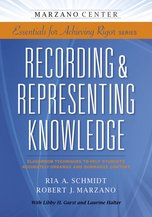
Recording & Representing Knowledge
Classroom Techniques to Help Students Accurately Organize and Summarize Content
By Ria A. Schmidt and Robert J. Marzano
Students must know how to record and represent what they've learned to effectively interact with new knowledge. With this instructional guide, part of the Essentials for Achieving Rigor Series (see next page), teachers learn strategies to help students summarize what they've read, analyze text for specific charac-teristics, and write about the content succinctly to demonstrate their understanding.
ISBN: 9781941112045
Publication Date: January 2015
World Rights Available
Classroom Techniques to Help Students Accurately Organize and Summarize Content
By Ria A. Schmidt and Robert J. Marzano
Students must know how to record and represent what they've learned to effectively interact with new knowledge. With this instructional guide, part of the Essentials for Achieving Rigor Series (see next page), teachers learn strategies to help students summarize what they've read, analyze text for specific charac-teristics, and write about the content succinctly to demonstrate their understanding.
ISBN: 9781941112045
Publication Date: January 2015
World Rights Available
Embedding Formative Assessment: Practical Techniques for K-12 Classrooms
|
Effective classroom formative assessment helps educators make minute-by-minute, day-by-day instructional decisions. This clear, practical guide for teachers centers on five key instructional strategies, along with an overview of each strategy and practical formative assessment techniques for implementing it in K-12 classrooms:
ISBN: 9781941112298 World Rights Available except Czech, Danish, Dutch, Swedish |
Identifying Critical Content: Classroom Techniques to Help Students Know What is Important
|
Do your students know which content is most important to learn? To meet rigorous academic standards, students must become adept at determining which content is critical, why it is important, how it connects to their existing knowledge, and when it will inform their future learning. Based on the earlier work of Dr. Robert J. Marzano, Identifying Critical Content: Classroom Strategies to Help Students Know What is Important provides explicit steps for implementation and monitoring students’ ability to identify critical content. It includes adaptations for various student populations, examples and non-examples from classroom practice, and strategies to avoid making common mistakes.
|
Creating & Using Learning Targets & Performance Scales: How Teachers Make Better Instructional Decisions
|
Can your students understand and even generate performance scales?
Academic standards call for increased rigor, but simply raising complexity is not enough. Students need to be able to understand learning goals, embedded in performance scales, which include application of knowledge. They should even be capable of generating their own learning scales. In turn, teachers must become adept at providing rigorous learning goals and planning and scaffolding instruction to meet students’ needs. Creating & Using Learning Targets & Performance Scales: How Teachers Make Better Instructional Decisions explores explicit techniques for mastering this crucial strategy of instructional practice. It includes:
|
Examining Similarities & Differences: Classroom Strategies to Help Students Deepen Their Understanding
|
Academic standards call for increased rigor, but simply raising complexity is not enough. Students must also be able to examine similarities and differences within the critical content they are learning. They need to know how to use comparisons, classifications, metaphors, and analogies to generalize, draw conclusions, and refine schema, ultimately deepening their understanding of the content.
Based on the earlier work of Dr. Robert J. Marzano, Examining Similarities & Differences: Classroom Strategies to Help Students Deepen Their Understanding explores explicit techniques for mastering a crucial strategy of instructional practice: teaching students to examine similarities and differences. It includes:
|
Leadership for Teacher Learning: Creating a Culture Where All Teachers Improve so That All Student Succeed
|
Leading education authority Dylan Wiliam explains how formative assessment, when applied properly, helps to create a structured and rigorous learning environment that increases student achievement. He also presents compelling research to give readers a clear picture of:
|
Inclusion & CCSS Supports For Students & Staff
|
Author Toby Karten summarizes the reasons and research behind Common Core State Standards and other initiatives and offers recommendations for using research-based inclusion strategies, instructional supports, monitoring, reflection, and collaborative practices to give all staff and students a step-by-step, outcome-based formula.
Karten highlights the ADMIRE strategic approach, focusing on ways to assess, activate, decide, delineate, model, monitor, instruct, involve, reflect, revise, engage, and enrich students and staff with the standards. |
iPads in the Classroom: From Consumption and Curation to Creation
|
Many educators see iPads only as game stations or replacements for notebooks and textbooks. In iPads in the Classroom, authors Tom Daccord and Justin Reich explain how iPads present a tremendous opportunity for teachers to rethink the design of learning environments to best suit the needs of their students.
This book isn’t about how to click on apps; it’s about how to transform schools and change students’ lives with differentiated, meaningful, purposeful learning that helps them develop the real-world skills they’ll eventually need for the working world and civic life in the decades ahead. |
Leading School Improvement: A Framework for Action
|
What does it mean to lead in a learning environment, as opposed to a system of knowledge transmission? A community, as opposed to a bureaucracy? A customer-oriented organization, as opposed to a public monopoly? To create truly powerful learning environments, school leaders must focus the lens on leadership, school improvement, and leadership for school improvement.
In Leading School Improvement: A Framework for Action, author Joseph Murphy pulls together 14 practitioner-based articles to present a cohesive narrative about the unique and critical role that leadership plays in school improvement. Murphy clearly identifies key factors that shape the future of any school and explains the work that leaders must do to ramp up academic press and foster a supportive culture for school improvement |
